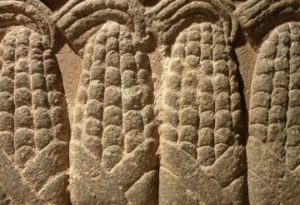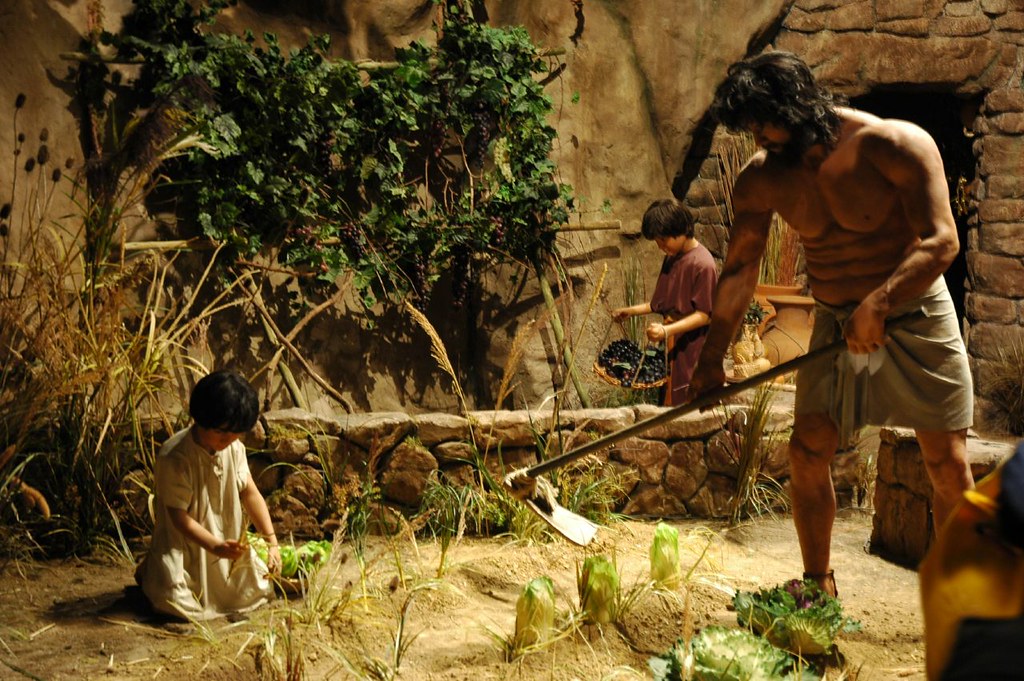
Lost and Found in Eden – Part II
by Usha Alexander
[Lost and Found in Eden – Part I is here.]
[This is the fifth in a series of essays On Climate Truth and Fiction, in which I raise questions about environmental distress, the human experience, and storytelling. It first appeared on 3 Quarks Daily. This fifth essay is divided into three parts. The fourth essay in the series, called ‘Tales from a Changing World’ is here.]
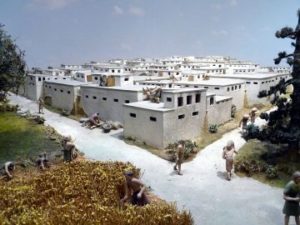
The first farmers we know of in the world lived in the eastern Mediterranean region less than ten thousand years ago. They became farmers by slow degrees, through a progression of choices that accrued over hundreds of preceding generations, leading them away from gathering and hunting a broad range of wild foods toward tending their own limited range of domesticated crops and herds instead. This was a truly momentous development in the human story, the first great plot twist: after hundreds of thousands of years of everybody following a relatively low-intensity, nomadic existence, some people decided to refashion the environment around them so that they could stay put while extracting what they needed from the land much faster than it could naturally regenerate.
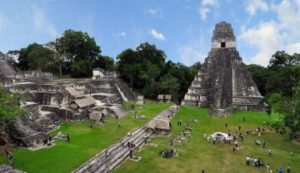
Even more surprising, within a span of six thousand years after the onset of the Holocene, pockets of people all around the globe came up with the very same idea—farming—from China to New Guinea to Mesoamerica and elsewhere. From a handful of such nodes, farming—and seeds or cuttings for the limited suitable crops—spread rapidly to nearly engulf the globe. No one had ever tried farming until the Holocene, and suddenly it was everywhere. This isn’t random coincidence. During the long glacial phases of the past, the cold temperatures and low concentration of atmospheric carbon dioxide weren’t optimal for the plants best suited for agriculture, primarily cereals and pulses. During the previous warm interglacials, all people still remained within Africa, where there weren’t many suitable crop plants, nor yet enough people in any one area to provide the cooperative physical labor required for such an enterprise. But by the end of the last deep freeze, people had expanded across the globe and population densities had risen in some regions, alongside tremendous funds of knowledge about local environments. And then the climate warmed and stabilized long enough to enable a lifestyle transition as highly leveraged and vulnerable as farming.
During the Holocene, stable climatic conditions have persisted, with only minor fluctuations, for ten thousand years, allowing peoples to thrive in the same spot season through season, generation upon generation, century after century, sometimes for millennia. Without this stability, we likely would never have achieved our highly complex civilization. And this, in turn, changed everything. It directly and indirectly changed the very planet in a manner as profound as any geophysical phenomenon. It fundamentally changed human society and human possibility. But while we like to portray this journey as one of steady and unalloyed human progress, it certainly led us through periods of increased collective hardship, not to mention having triggered anthropogenic climate change and a global mass extinction event. We forget that for all the gains we have collectively made, we have also lost much in this transition.
The Thickening Plot

The precise rate and route of agricultural development varied with local conditions around the globe. Thousands of years before the rise of agriculture, foragers everywhere had started practicing different forms of large-scale resource management: burning forests and grasslands to renew growth, create clearings, or hunt; translocating plant species; husbanding the growth of trees and other plants within natural patches of forest; and in some cases, domesticating plants through artificial selection. Through these activities—as well as hunting, sometimes to the point of species extinction, which can itself ripple into landscape changes (a phenomenon known as a trophic cascade)—human activities had already begun to change the planet. In some regions, foraging groups began to mix broader landscape management with gardening or farming, while remaining semi-nomadic, or while settling into permanent villages that yet resisted growing into larger towns and cities, thus retaining low population densities. Elsewhere, farming led directly to intense agricultural urbanization. In several places, the discovery of edible grass seeds—rye, wheat, rice, millet, sorghum, maize—seems to have led the turn toward more intensive agriculture. In Mesoamerica, nomadic foragers were domesticating squash and manioc for thousands of years, while practicing a less intensive system of land and resource management; only after they incorporated corn into their mix did they eventually settle and burgeon into the cities of the Olmecs and Mayans. In the New Guinea Highlands, where villagers primarily grew banana, taro, sago, yam, and sugarcane, they settled but never grew into cities.
Denser living spurred advancing technologies for food planting, harvesting, processing, preservation, cooking, and storage; animal domestication and husbandry; metallurgy, first copper, then bronze, then iron; property regimes and homesteads; weapons and stratagems for highly organized warfare. By differing degrees and specifics across regions, urbanization also brought deepening social stratifications, including various forms of serfdom or peonage, specialized professions, and escalating patriarchal domination.
Through this transition, societies moving toward denser urbanization had traded the freedoms of nomadism for a slate of consequences they might not have chosen, had they been able to see where it would lead them. For most urbanizing individuals found themselves remaining their whole lives in one place, among dense throngs of people, heaps of waste, flatulent herds, mice and rats—enabling the rapid spread of infectious diseases, from malaria, rabies, and the plague to smallpox, flu, leprosy, and tuberculosis. But townsfolk also built ever sturdier shelters against the elements; they found safety and strength in large numbers, as well as a denser field of ideas and collaborations for innovation.
As settlements grew increasingly dense and complex, city-dwellers submitted their bodies and minds to the dictates of ever deepening social hierarchies, with all the psychological adjustments that entailed. Most of them were now actually spending more time working harder for the same calories and nutrition—or for less, depending upon one’s place in the social order—compared to their nomadic, foraging contemporaries, at great cost to their overall nutrition and health. They toiled, voluntarily or not, to build monumental works of art or engineering. They began to collect roomfuls of material possessions, maintain and guard them, covet those of others, and admire individuals who had collected the most and the finest. They discovered new modes of power and coercion, collective action and communal harmony. They learned to separate human society and existence from the rest of nature, and to esteem their growing distance from it. They refined linguistic scripts and preserved ideas by writing things down on durable materials to be read by others, even as they read the thoughts of others who had lived long ago or far away. Urban life enabled a completely novel human experience and a new range of stories—including all the familiar Iron Age tales that linger with us today as the foundational mythologies of the world’s most dominant religions—opening new fields of social imagination for what is possible and what is right, fundamentally altering our understanding of our place on the Earth and in the cosmos, our notions of wealth and poverty, our ideas of purpose and order.
Knowledge systems shifted to cover new social and material realities, at the expense of the nomad’s immersive knowledge of the natural world. As people domesticated animals, they forgot their broader understanding of the wilderness. Wherever agriculture became the singular mode of subsistence and populations boomed, people also soon resorted to redirecting water from rivers and destroying wetlands. They exhausted topsoils and created conditions that hastened erosion, spread monocultures and destroyed habitats. The resulting decline of local ecosystems drove a demand for higher yields from the farmers’ own crops and herds, in a feedback cycle promoting more intensive farming, greater population growth, and further environmental destruction. Local environments were strained in ways that had never before been felt upon the planet. As human societies grew denser, they intensified technological innovation, altering nature to favor their own near-term growth, oblivious to the long-term impact.
[End of Part II]
[Lost and Found in Eden – Part III]
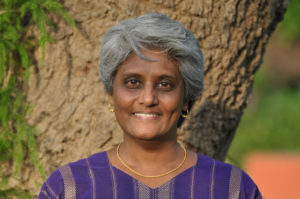
Usha Alexander was born to Indian immigrants who came to the United States in the 1950s and settled in the very small town of Pocatello, Idaho. She ran away to university at the age of 19, and later joined the US Peace Corps, where she served as a science teacher in the archipelago nation of Vanuatu. In the late 90s, Usha made her way to the San Francisco Bay Area of California, where she settled and worked for Apple Computer for many years.
Since 2013, Usha resides with her partner, writer and photographer, Namit Arora, in the National Capital Region of India. Usha has lived in four different countries and has learned to carry her home within herself, yet she frequently returns to the CA Bay Area with a certain sense of homecoming.
